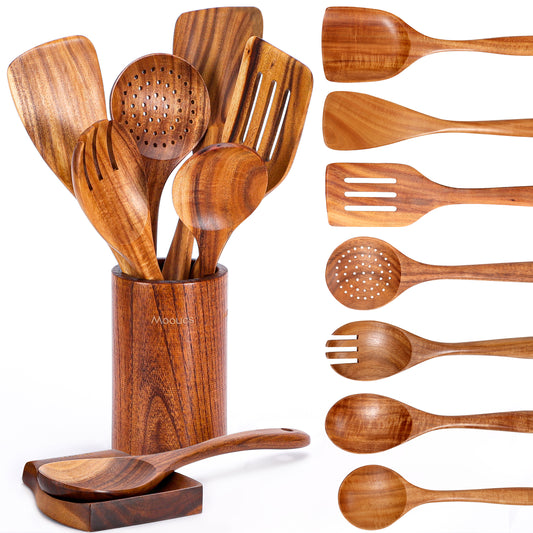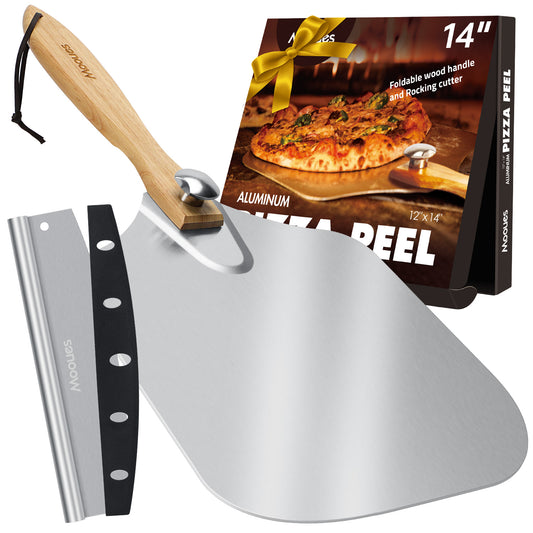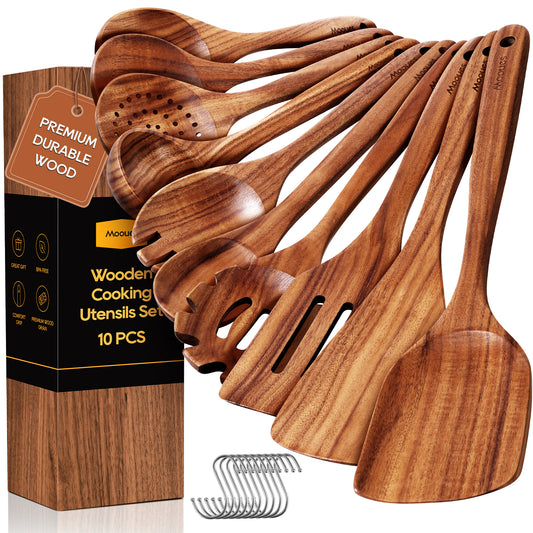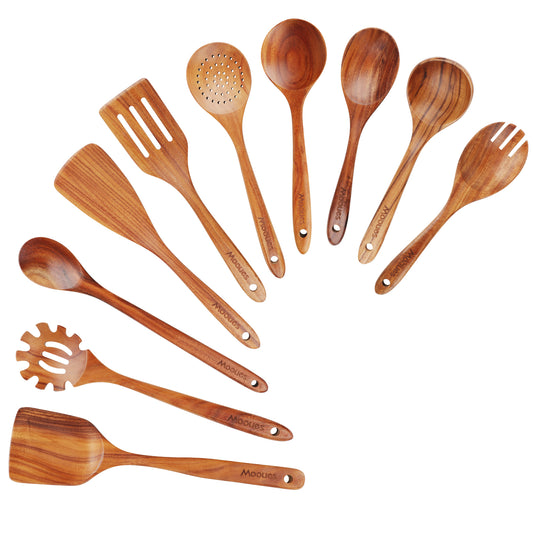How to Clean Wooden Spoon: The Ultimate Easy Guide
Wooden spoons are the unsung heroes of any kitchen. They’re gentle on your pots and pans, won’t react with acidic ingredients like tomatoes, and with proper care, they can last a lifetime. But let’s be honest: most of us buy a wooden spoon, toss it in a drawer, and forget about it… until it starts cracking, drying out, or smelling funky.

If you’ve ever wondered how to clean a wooden spoon (and keep it from warping, cracking, or picking up weird odors), this guide has you covered.
Why Wooden Spoons Need Special Care
Unlike metal or silicone utensils, wooden spoons are porous. They absorb water, oils, and even odors. Skip proper cleaning, and you risk a cracked, dry, or smelly spoon.
The good news? A few simple steps will keep your wooden spoons looking and feeling great for years. And if you want to learn more about the types of wood used in kitchen utensils, check out our Teak Wood Guide to understand why quality wood matters.
Step 1: Hand Wash With Warm Water and Unscented Soap
- Always wash immediately after use. The longer food sits on it, the harder it is to clean—and the more likely bacteria will form.
- Use warm water and unscented dish soap. Scented soaps can leave residues that the porous wood absorbs.
- Gently scrub with a sponge or soft brush.
- Do not soak your spoon; prolonged water exposure can make the wood swell and crack.
A simple tip from frequent home cooks: “Clean them by hand like any other kitchen utensil. Do it right after cooking, and your spoon will stay in great shape.”
If you’re curious why wooden utensils are a better choice than plastic or metal, take a look at Why Wooden Kitchen Utensils Are the Best Choice for Home Cooks.
Step 2: Dry Completely
- Pat dry with a clean towel.
- Stand the spoon upright in a dish rack or on a clean surface to air-dry completely, ideally overnight.
- Never put wooden spoons in the dishwasher—heat and water can ruin them.
Kitchen experts note: “Boiling wooden spoons or tossing them in the dishwasher can warp, crack, or splinter the wood.”
Step 3 (Optional): First-Time “Boil” for New Spoons
If it’s a brand-new wooden spoon, the first few uses might release some color or wood taste into soups or boiling water. This is normal.
- Optional step: Place your wooden spoon in a pot of water and simmer for 2–5 minutes, then discard the water.
- This helps release any natural wood pigments, making your soups look clearer and more appetizing.
Pro tip: After this, apply a layer of mineral oil to seal the wood for extra protection.
For those looking to upgrade their entire wooden utensil collection, check out our Teak Wooden Cooking Utensil Set with Spoon Rest or our 10pcs Teak Wood Cookware Utensil Set with Hooks. High-quality teak lasts longer and is easier to maintain than cheaper woods.
Step 4: Condition With Food-Grade Mineral Oil
- When your wooden spoon starts looking dry or dull, it’s time to oil it.
- Use food-grade mineral oil—neutral, odorless, and won’t go rancid like olive or vegetable oil.
- Apply a few drops to a towel and rub evenly across the entire spoon, especially the head and edges.
- Let the oil absorb overnight.
- Optional: Apply a thin layer of food-grade beeswax for extra protection. If water beads on the surface, your spoon is well-conditioned.
Experienced home cooks recommend: “Wiping down wooden spoons with mineral oil when they start to dry keeps them smooth and prevents cracks.”
Step 5: Avoid Common Mistakes
- ❌ Don’t soak wooden spoons in water
- ❌ Don’t put them in the dishwasher
- ❌ Don’t use harsh chemicals or bleach
- ❌ Don’t ignore deep cracks or splinters—replace severely damaged spoons to avoid bacteria
Quick Tips to Make Them Last
- Treat your wooden spoons like your favorite cast-iron skillet—a little love goes a long way.
- Keep mineral oil handy and oil your spoons every few weeks.
- For new spoons, consider the optional short boil to reduce color leaching.
- Well-cared-for wooden spoons can last decades and develop a beautiful natural patina.
Final Thoughts
Learning how to clean a wooden spoon isn’t complicated: hand wash, air dry, and condition occasionally. With a little care, your wooden utensils will remain safe, functional, and charming for years.
Wooden spoons aren’t just tools—they’re small kitchen investments that, when properly maintained, can last a lifetime. And if you want to explore more about why wooden utensils are worth it, check out Why Wooden Kitchen Utensils Are the Best Choice for Home Cooks.









